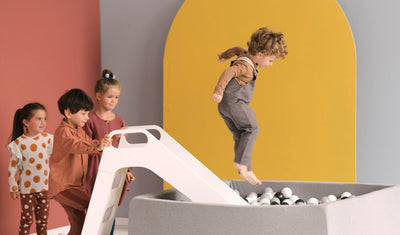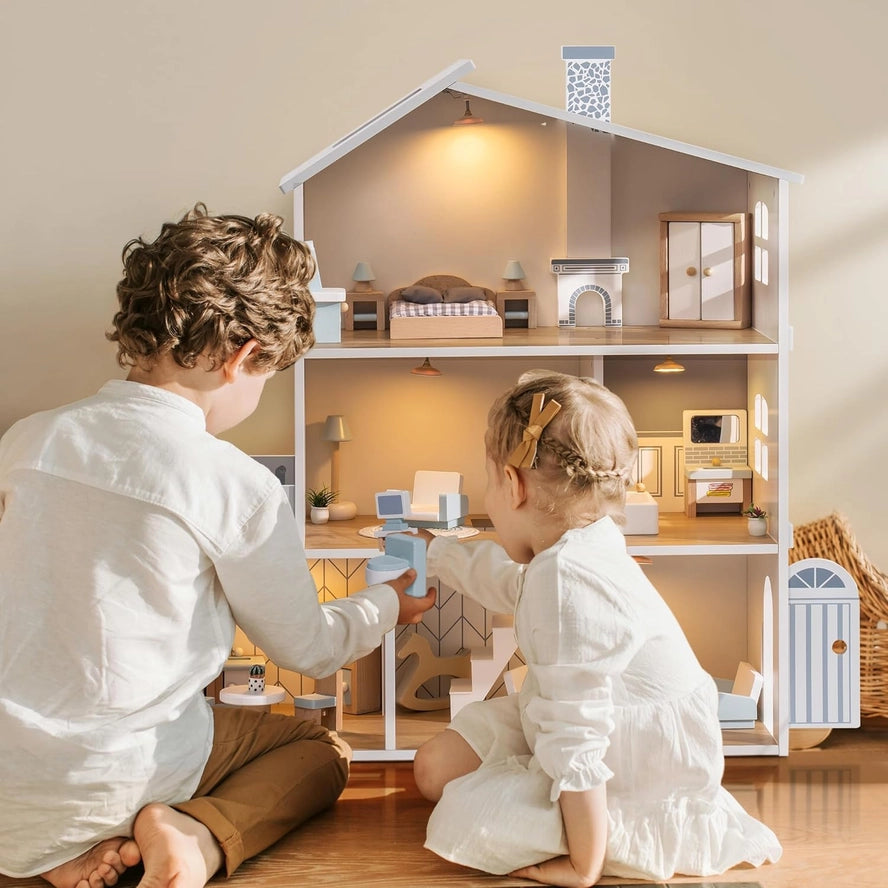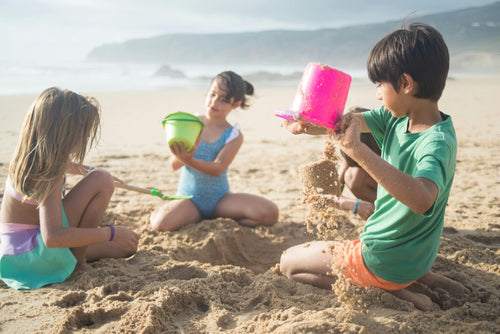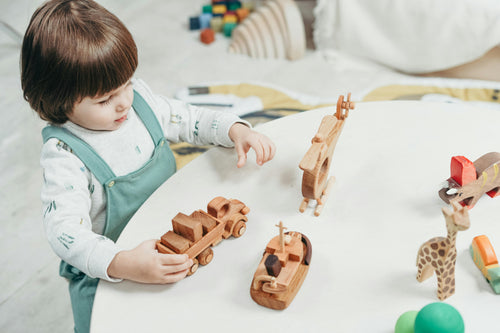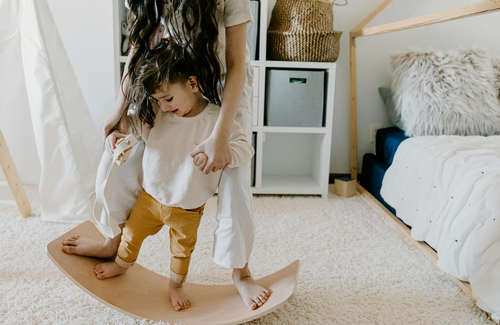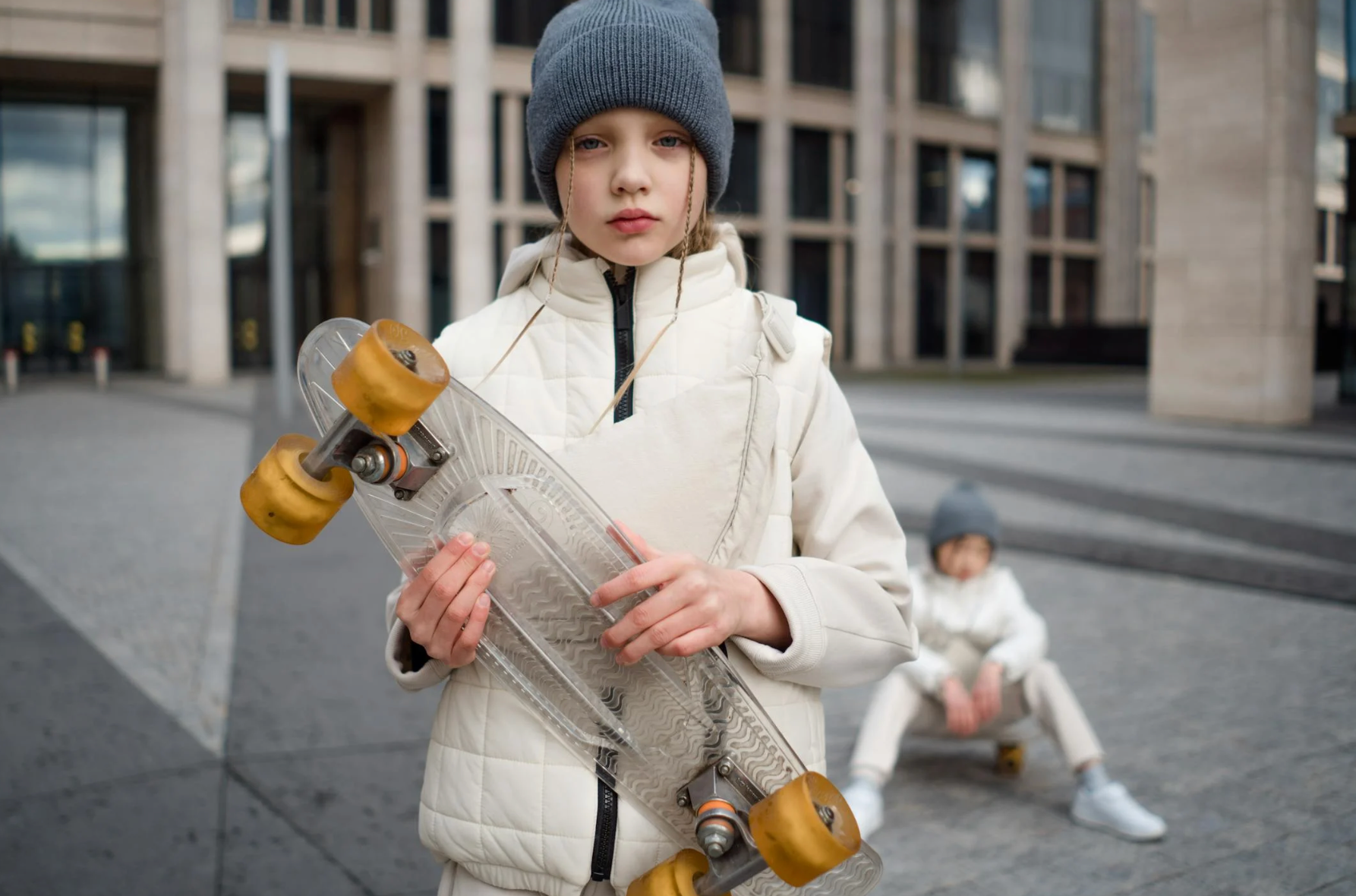
Teaching my child to skateboard
Teaching your child to skateboard is an adventure that's as fun as it is rewarding. Skateboarding is much more than just a sliding activity; it's a sport that promotes motor skills, improves balance, and boosts self-confidence. By introducing children to this discipline, parents give them the opportunity to learn in a fun way in a safe and supportive environment.
This article guides you to understand the benefits of skateboarding for children and offers effective methods to teach them this discipline gradually and appropriately.
A motor skills activity to strengthen balance and coordination
Skateboarding is an ideal sport for developing children's motor skills. By practicing riding, pushing, and maintaining balance on the board, children strengthen their reflexes, perfect their hand-to-foot coordination, and sharpen their perception.
Every action, every attempt to progress or pivot turns into a moderate but effective physical exercise. Like sensory boards , skateboarding encourages children to explore their physical abilities and surpass themselves.
How to teach your child to skateboard ?
Teaching a child to skateboard is, above all, a fun and gentle adventure. Here are a few simple steps to guide them through their first steps:
-
Choose the right starting point : You need a flat, calm and open place (a path or a corner of a park for example) which is suitable for starting out on a skateboard.
-
Be well equipped : Before getting on the board, the child must be well equipped, that is to say with a helmet , knee pads, elbow pads and wrist guards .
-
Learning the basics: Before riding, the child learns to get on, get off, and balance on the board, while still . You can help them by holding their hand.
-
Move forward gradually : He begins to move forward by pushing gently with one foot, then placing both feet to roll gently . He must learn to find his balance and gain confidence .
-
Learning to turn and stop : He will then be able to turn by shifting his weight, and stop by putting his foot on the ground or using the brake on his board.
It's important that each session is fun and pressure-free. Children progress at their own pace, develop their motor skills, and enjoy learning in complete safety.
Safe learning thanks to good equipment
Before starting this sport, you need to equip yourself. Wearing protective gear is essential to avoid injuries and reassure the child. You must have a helmet , knee pads, elbow pads, and wrist guards to be well protected.
In addition, you need good supervision and a good learning environment (children's skatepark or playground , flat and open ground) and a beginner's skateboard that will allow for progressive and safe learning .
Freedom to explore at your own pace
As in Montessori education, the child must be able to learn at his or her own pace. No need to go too fast: the important thing is to let him or her experiment, drop, explore, and try again. This learning method allows him or her to gain confidence in what he or she does and promotes autonomy. The child chooses when and how he or she wants to progress, which makes the experience more rewarding.
Teaching a child to skateboard is more than just a hobby; it teaches them the values of perseverance, freedom, and self-respect. It also helps them develop their motor skills while building their confidence.
With the right protective gear , a little patience, and encouragement, skateboarding can become a true passion. Whether at home or in a skatepark, skateboarding can become an educational and stimulating game to share with the family.

